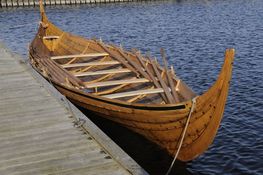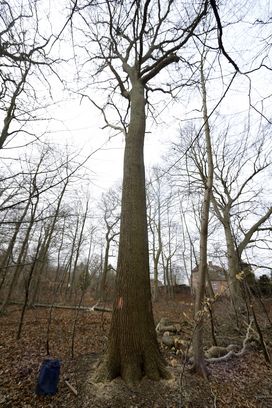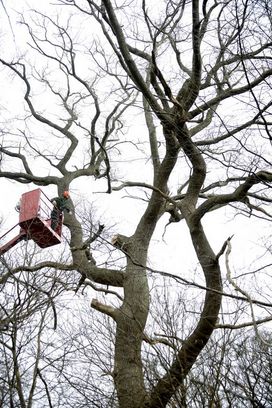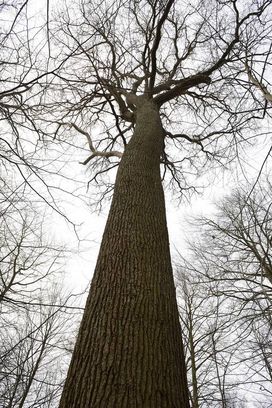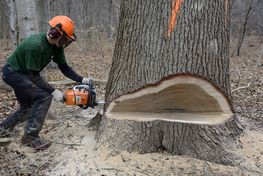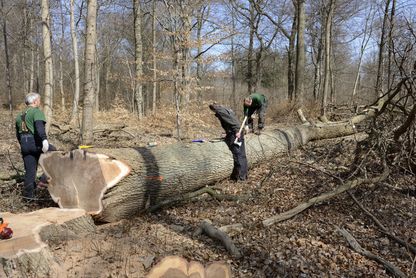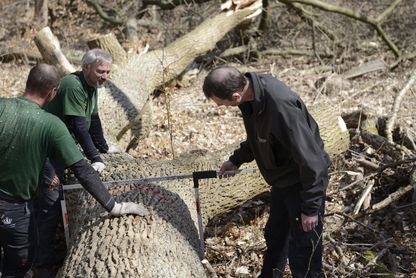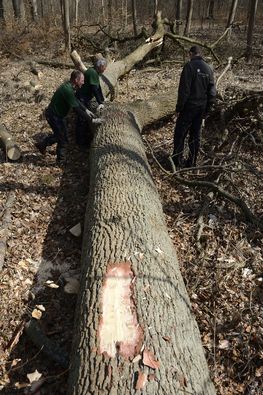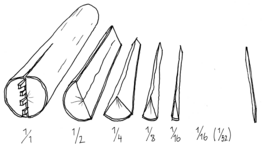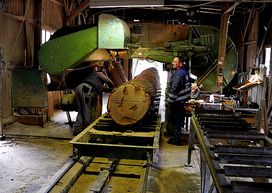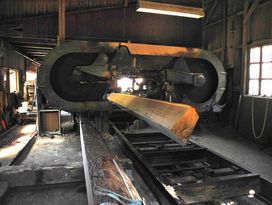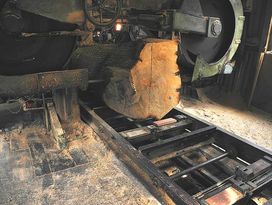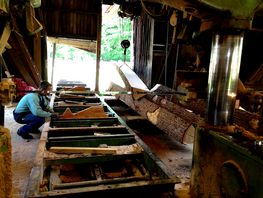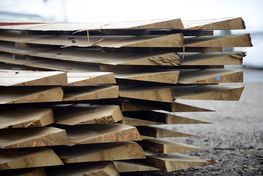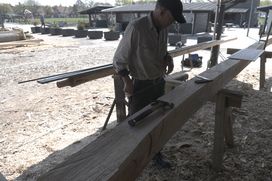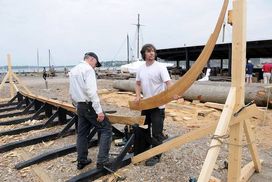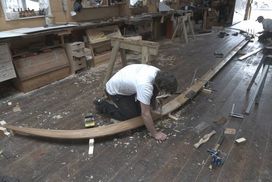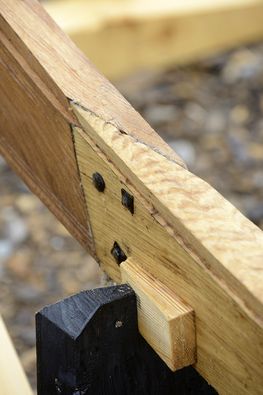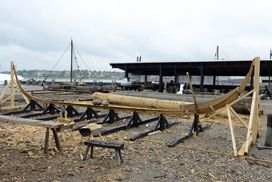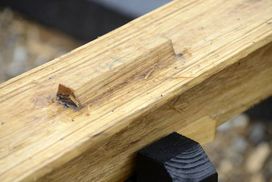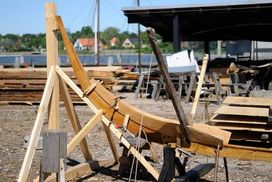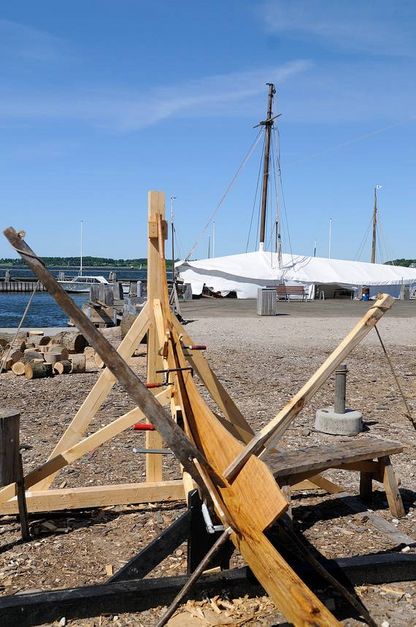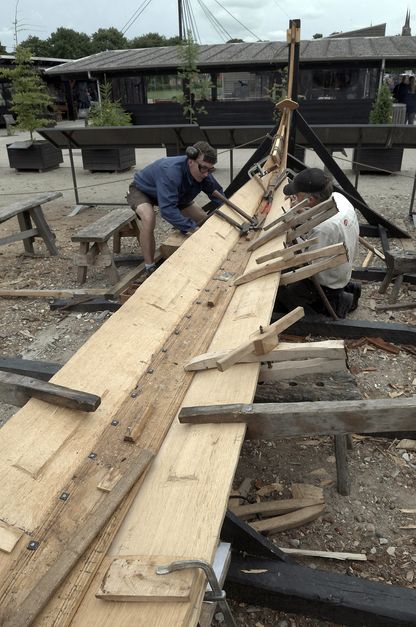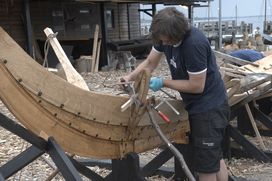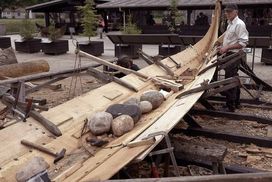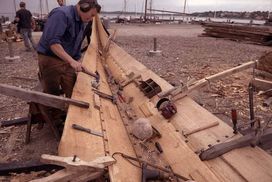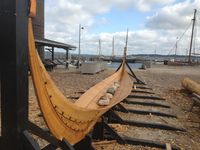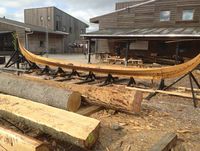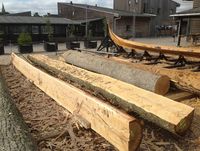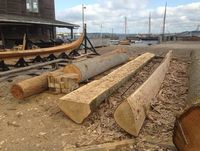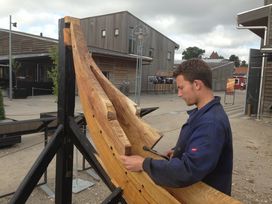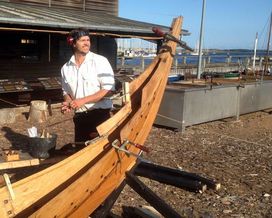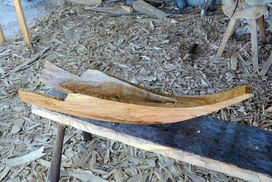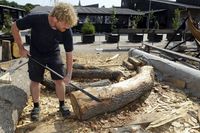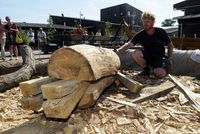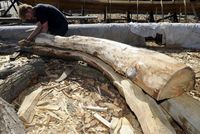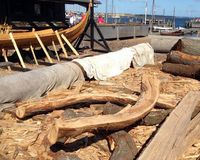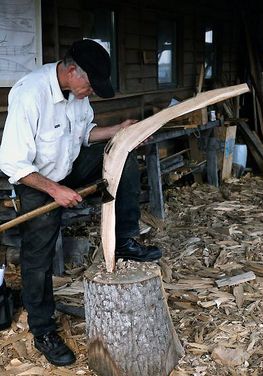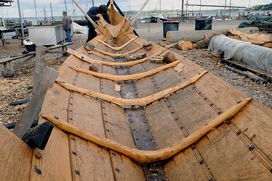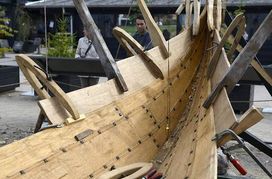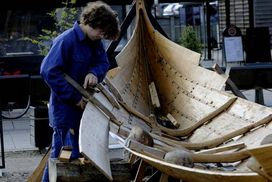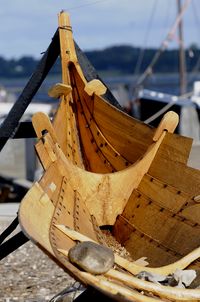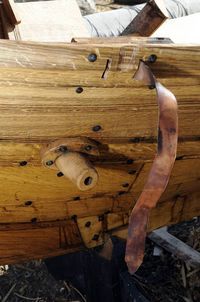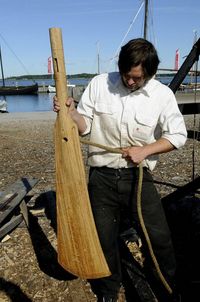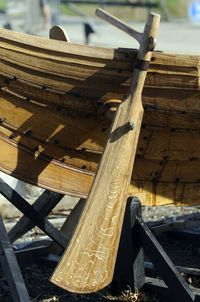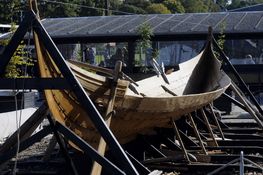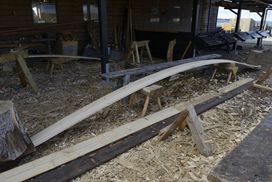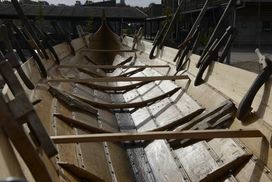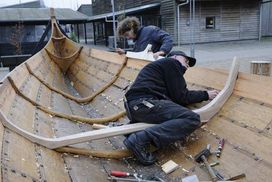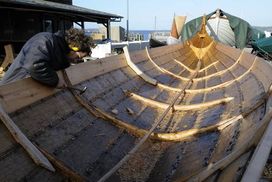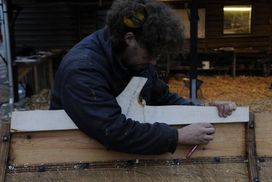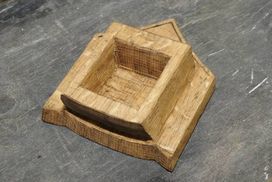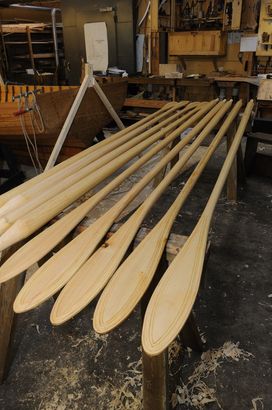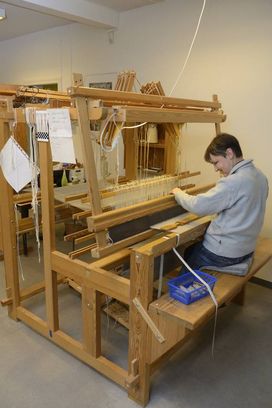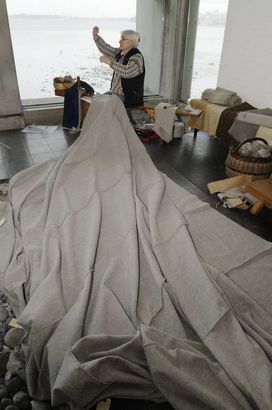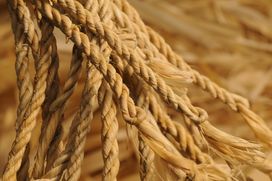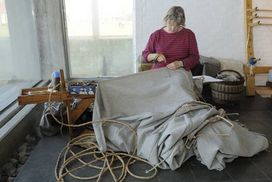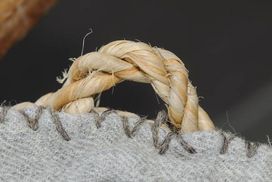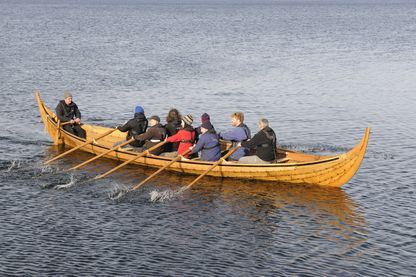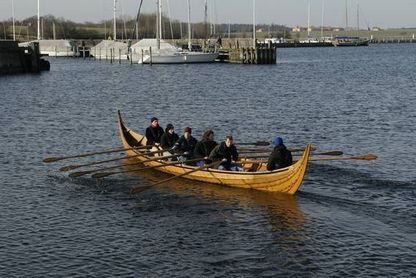The Gokstad Boat
Boatbuilders Birger Andersen, Maik Riebort, Martin Rodevad Dael, Asger Rørdam and boatbuilding apprentice Malthe Solhøj, built the largest of the three small boats that were found with the ship burial at Gokstad in Norway.
Length: 9.77m
Width: 1.86m
Sail area: 14m2
Oars: 5 pairs
At the beginning of the 10th century, a 40-50 year old man was buried in a 23.8m long ship at Gokstad, on the Oslo Fjord in Norway. The dead man's identity is unknown, but cut marks on the skeleton indicate that he died in battle. We also know that he must have been an important person. The grave chamber in the aft of the ship was decorated with gold-embroidered tapestries and the grave goods were luxurious: eating and drinking utensils, a sleigh, six beds, a chest, a saddle, gilt harness, 64 shields, 12 horses, 8 dogs, 2 peacocks and more. On the deck, lay three boats; a small, a medium and a large boat. The boats were deliberately broken up and the fragments lay mixed together on the deck.
The find was conserved after the excavation in 1880, and in 1929, work on restoring the ship and reconstructing the three small boats began. Frederik Johannesen, a naval engineer, first reconstructed the lines of the Gokstad ship. Then he pieced the fragments of the smallest and largest of the boats together, by comparing the decorative mouldings on each individual fragment. The third boat was reconstructed by Terje Planke og Svein Erik Øya i 2002.
The boat had four strakes, which were held together with hand-forged iron nails. The frames were attached to the planks using treenails. The planks were radially cleaved and the frames were made of crooked timber. Cleaving ensures that the wood fibres follow the line of the finished piece. In this way, the wood retains its natural strength and flexibility.
The boat was equipped with a hand-laid linden bast rig and a hand-woven wool sail. It is intended that the boat will be used to communicate Viking history both at home and abroad.
Click on the photos to enlarge them
The Gokstad boat is predominantly built of oak, but the uppermost strake is made from pine.
This beautiful oak tree, used to make the cleaved planks, came from Jægersborg Hegn. There are many large, fine oaks in the part of the forest close to Nærum. It is well worth a visit.
Finds of ships in archaeological contexts reveal that there were many such trees to be found in forests during the Viking Age. Today, first class oak can be difficult to find.
The oak should preferably be straight-growing and free of knots. In that way, the planks we can produce for the new boat will be of the same high standard as on the original.
In the crown of the tree, there were many crooked timbers, which were cut by tree surgeons so that they wouldn't crack or be damaged when the tree was felled. The crooked timbers would be used to make the frames for the boat.
The Vikings didn't use a saw to produce planks, instead, the cleaved them from the trunk. When cleaving with oak, the wood is cleaved along the tree's natural radius which goes from the centre out to the bark, just like the spokes on a bicycle wheel.
After confirming that the wood was straight-growing, we decided to radially saw the planks at a saw mill. We could not have done this if the tree hadn't been straight-growing; then we would have had to cleave them in order to follow the tree's fibres.
We can get the most use out of the tree by sawing the planks - in this way we get more planks than we would have if we the tree had been cleaved.
As mentioned above, there are very few large oak trees remaining in the Danish woods, so we think that we owe it to those there still are, to use them in the most effective way possible.
The keel is roughed out of an oak trunk with the pith in the centre, as seen on the original boat and on many other keels from the Viking Age.
Afterwards, we must assess the timber and mark it up, before it can be finished.
The keel and the finished stems are lain on the floor in the boatyard. Here, the measurements are checked and they are marked up against the joints fore and aft.
Maik and Birger set the keel and stems up at the construction site.
The foremost curved hood-end is adjusted to fit.
Behind it lies an oak trunk for the third strake and a pine trunk for the fifth strake. Both of these strakes are tangentially cloven (rather than radially cloven), which means that we can get two planks out of each piece, as on the original boat.
Each floor timber (the lowest part of the frame) lies in a clamp which is cut out of the keel.
The floor timber is not made fast here, in contrast to the large Gokstad ship where the floor timbers were lashed onto the clamps using strips of baleen plates ...
The two aftermost curved hood-ends are stretched out into the desired shape while being adjusted to fit
The second strake starts with a curved hood-end on the starboard and port sides, fore and aft. Here, Maik is boring holes to the iron nails in the join between the hood-end and the next plank.
The shape of the boat is adjusted by pressing either downwards or upwards in the planks, until they acquire the correct shape.
The plank must be adjusted and set up in its final form, before it is riveted in place.
Here, the final plank of the second strake is made ready. When the scarfs (joints) are cut, the strake can be made fast with iron nails.
Stones on the keel help to maintain the correct shape of the keel and boat.
The upper edge of the second strake is finished.
The third strake is made of long, tangentially-cleaved oak planks, just as on the original boat.
With tangential cleaving, the tree trunk is broken into two halves and one side is fully roughed out. Afterwards, evenly spaced cuts are made into the opposite side, where shorter sections can be cleaved away. This results in just two planks per tree, in contrast to radial cleaving, where you can get up to 32 planks from the one tree.
The pine trunk, lying in the background, will also be tangentially cloven to make the fifth strake.
The reason why this strake was tangentialy cloven is that - also in the Viking Age - it was easier to find a tall oak tree with a small diameter, which gives a broad plank if tangentially cloven (i.e. the width of the plank will be the equivalent of the tree's thickness), then it is to find a tall oak with a sufficiently large diameter to allow for radial cleaving (where the planks will only be half of the tree's diameter).
The length of the plank is important here in the third strake, because it stiffens the construction along its length more than when there are several planks joined together.
Martin is working on a peculiar piece for the stem. It is made from a forked piece of oak, ie. a trunk that has split itself into two branches. This piece will go up on the stem and extend downwards to lie on the second strake.
The piece is easier to understand after it has been completed.
The third strake is attached to the lowest step. On the upper step, a plank will be attached that will further divide itself between the fourth and fifth strakes, while also holding the piece together with the upper strakes and stem.
Yet another beautiful, functional and ingenious solution from the boatbuilders of the Viking Age.
Crooked timbers for the floor timbers (the lowest section of the frames) are also cleaved. If the pieces are large enough, several floor timbers can be made out of the one piece of timber.
Here, the bark is removed so that it is easier to decide how to begin...
Malthe cleaves the crooked timbers with the same technique used when radially cleaving the straight oaks; straight through the centre and along the rays of the tree. If done differently, the cleaving won't follow the tree's fibres and it would therefore be much more difficult to control the split.
This piece is cleaving well, but knots and other flaws mean that it is difficult to split.
It looks a Little unpromising, in its rough state...
It is vital to 'find' the floor timber in the wood, so that the oak fibres follow the desired shape of the finished piece. Each time a cut is made across one of the fibres, the timber becomes weaker.
All of the floor timbers are secured using treenails made of pine with additional iron nails on the top.
The rudder bulkhead can just be seen in the aft.
The two uppermost strakes, the fourth and fifth strakes, end at the stems in a double hood end: a piece that joins together two seperate timbers.
The double hood end is partly shaped initially, but the final form of the piece is produced by manipulating the timber either inwards or outwards.
As long as the plank is fresh and wet, it can be forced into shape but planks can also be shaped by warming them up over fire or hot coals first. In modern boatbuilding, the timber would be heated in a steam chest in order to make it soft and pliable.
Asger adjusts the fourth strake.
Before the plank is attached using iron nails, it must be fitted carefully. It will be taken on and off a number of times, in order to ensure that the 'land' (the overlap between two strakes on a clinker-built boat) fits properly. The boatbuilder has to fit the strakes together in such a way, so that they will be watertight.
As well as making sure they fit precisely, a woolen thread is also inserted between the boards. The wool is coated with tar, which prevents rot, and will soak up the worst of the water that can begin to seep in as the boat gets older or dries out after a period on land.
Abaft, the rudder bulkhead is fitted. The rudder sits on the starboard side (the term derives from 'styrbord', the Old Norse term for a rudder) and is attached to the bulkhead through the side of the boat. The bulkhead is made from a forked piece of oak.
Maik is finished with the side rudder. The hole for the rudder withy, which is either made from rope or a branch that has been twisted until pliable, is used to attach the rudder to the side of the bulkhead.
The opening in the top is for the tiller.
The rudder withy goes through the rudder and then through the 'rorvort' (the small cyclindrical timber extending from the side of the boat) which is used to hold the rudder at a specific distance from boat's side. At the top of the picture, you can see an indentation in the boat's side, where the rudder will be made fast using a leather strap.
The system functions well, especially on the smaller boats. The same system is also used on larger craft from the Viking Age. Our sailing trials with reconstructions of larger Viking Age ships have shown that this is a weak point on Viking ships. The larger the rudder, the greater the impact on the rudder withy and ship.
In the Middle Ages, boatbuilders began to place the rudder at the aftermost point on the stern: this was both a stronger and a better solution.
Even at 8m above ground level, the tree still measured 85 x 85cm.
